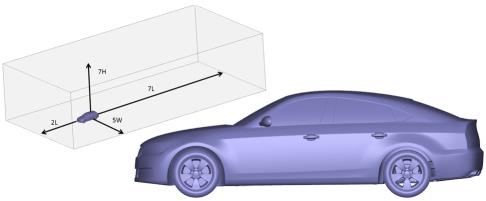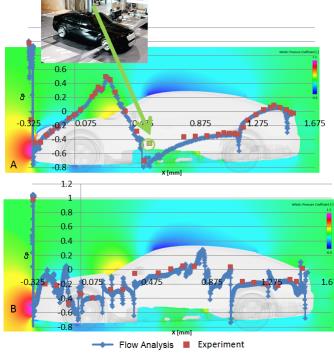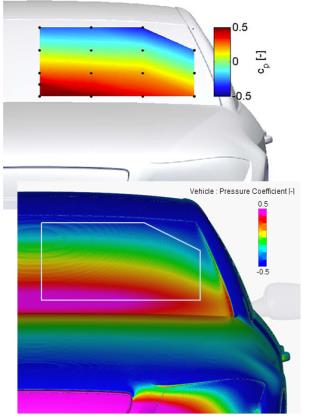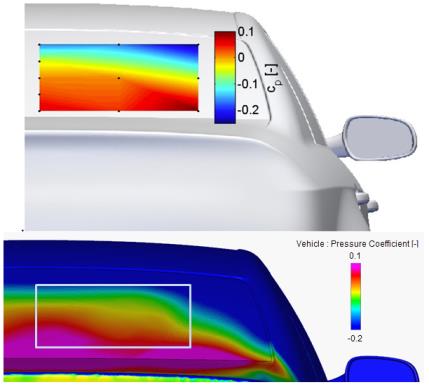DrivAer
Aerdynamic Analysis of the DrivAer Fastback Car Body
Problem Statement: 3D turbulent flow is modeled over the DrivAer Fastback car model created by TU Munich. The open-source DrivAer car geometry was created by collaborations between TU Munich, Audi AG, and the BMW Group. The DrivAer car is intended to bridge the gap between simplified models such as the Ahmed body and complex high production cars.

References: Heft, Angelina, Thomas Indinger, and Nikolaus Adams. "Investigation of unsteady flow structures in the wake of a realistic generic car model." In 29th AIAA Applied Aerodynamics Conference, p. 3669. 2011. Dhar, Sujan, and Yu Jiang. Numerical Analysis Using Fast RANS Simulations and Comparison with Experimental Measurements for Closed and Open Grille Realistic Car Models. No. 2019-01-0655. SAE Technical Paper, 2019.
Fluid Properties | Geometric Properties | Working Conditions |
|---|---|---|
Density = 1.176 kg/m3 Viscosity = 1.85 x 10-5 Pa-s | Fastback variant with detailed underbody, mirrors, and detailed wheels | Re = 4.87 x 106 |
Result Comparison –Drag coefficient
Results | Experiment | Creo Flow Analysis | Percent Error |
|---|---|---|---|
Drag Coefficient | 0.284 | 0.282 | 0.7 |
Result Comparison – Pressure contours around car, pressure coefficient comparison with experiment.
Pressure coefficient distribution at the y=0 plane for the Fastback model from simulation and experiment is shown in the image below. Measurement points that correspond to the vehicle roof strut in the experiment are also shown.

• A = Top of the vehicle
• B = Bottom of the vehicle
Result Comparison – Coefficient of pressure distribution on front and rear windshields.
The table below shows the pressure coefficient on the front and rear windshields. The experimental measurements from the TU Munich wind tunnel are shown in the images on top and are compared to the simulation results in the lower images.
Front Windshield | Rear Windshield |
 |  |